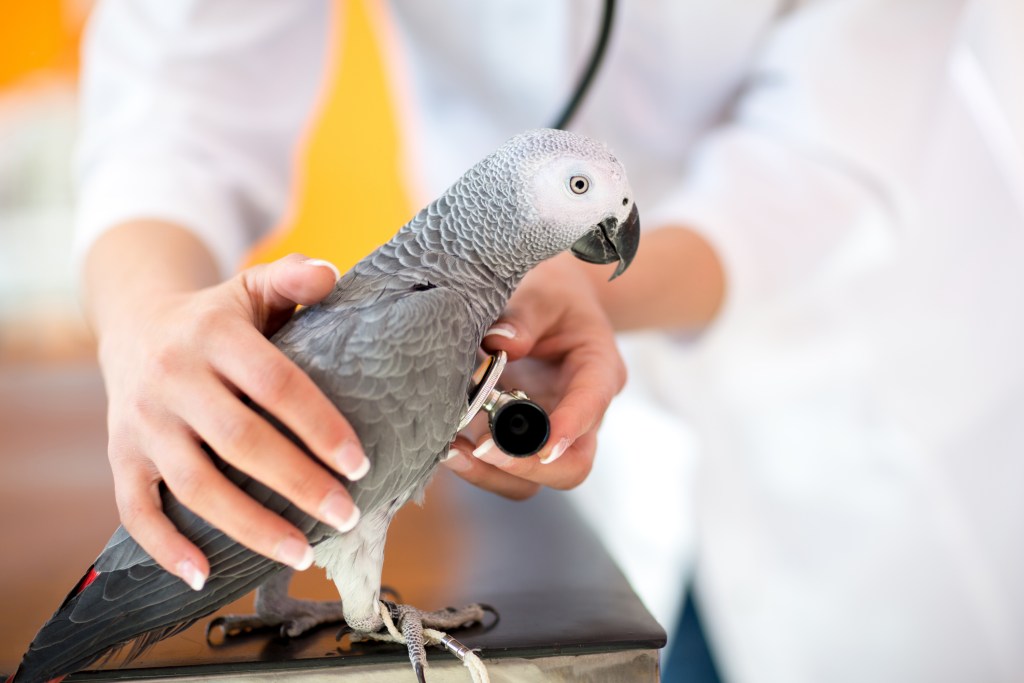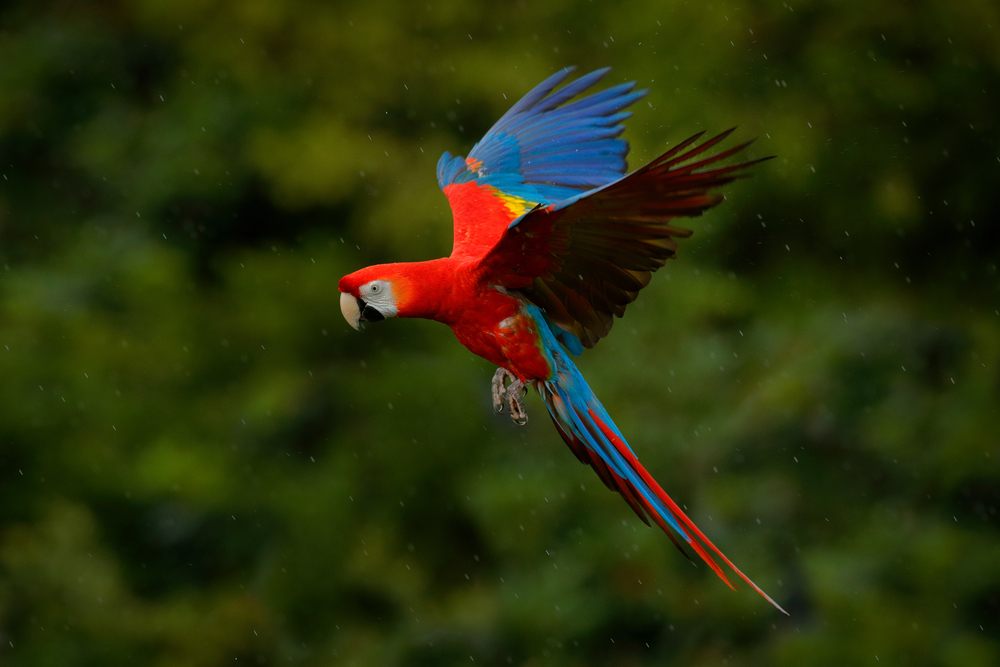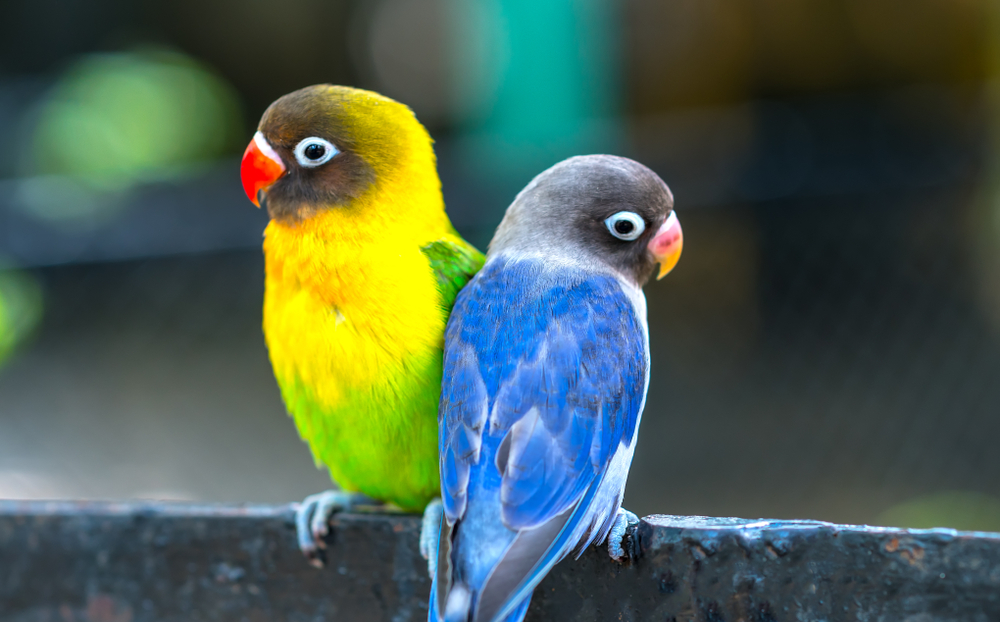Avian influenza, more commonly known as bird flu, can infect any species, including poultry, wild birds, and domestic pets. Most alarmingly, bird flu is zoonotic, meaning humans can become infected after being exposed to the feces, saliva-coated feathers, or nasal discharge of infected birds. In fact, bird flu is so contagious that outbreaks have to be reported to the U.S. Centers for Disease Control and Prevention. Additional steps have been instituted to prevent an outbreak: Imported birds must complete a federally mandated quarantine of 30 days minimum before owners are permitted to take them home. Given the potentially devastating consequences of an outbreak, you may be wondering how to tell if a bird has bird flu. Here’s what you need to know.

What is bird flu?
Bird flu is a type of influenza A virus that impacts the respiratory and digestive tracts of infected birds. Bird flu is separated into two categories: highly pathogenic avian influenza (HPAI) and low pathogenic avian influenza (LPAI). To prevent a potential outbreak, the U.S. Department of Agriculture’s Animal and Plant Health Inspection Service may ban imported birds from countries affected by outbreaks of HPAI. While infected birds can shed the viruses in their secretions, it’s also possible for birds to become infected through surface contamination. Both LPAI and HPAI can spread rapidly, but some birds never show signs of illness. Many wild birds, such as ducks, geese, and gulls, are considered avian influenza carriers, also called asymptomatic hosts.
Over 25 strains of bird flu have been identified, though most don’t infect humans. However, two strains — H5N1 and H7N9 — have caused outbreaks in Africa, Asia, Europe, and North America. Most people infected with avian influenza contract the virus after handling infected birds or coming into contact with contaminated surfaces. Crowded open-air markets and consumption of undercooked eggs and poultry also can spread avian influenza among humans. Person-to-person transmission is rare, but infections can have deadly consequences. According to the World Health Organization, H5N1 kills almost 60% of those who contract the strain.
Symptoms of bird flu in humans
Recognizing bird flu is the first step in effective bird flu treatment. Unless you know your bird’s origins, we recommend having new birds examined by a veterinarian to rule out influenza infections. Handle your new bird wearing personal protective equipment to prevent contracting avian influenza.
Symptoms of bird flu in humans include:
- Headache
- Fever
- Cough
- Muscle aches
- Nausea
- Vomiting
- Diarrhea
- Shortness of breath
- Sore throat
In rare cases, conjunctivitis — an eye infection— is the only symptom in humans. If you suspect that you’ve been exposed to bird flu, see your doctor immediately.

What to do if you suspect your bird has bird flu
Unfortunately, birds can’t tell us when they feel ill, so it’s our job to keep an eye on them. While not all birds are symptomatic, here’s what you should look for:
- Coughing
- Runny nose
- Lethargy
- Lack of appetite
- Diarrhea
- Swelling of the head
- Decreased egg production
- Misshapen eggs
- Sneezing
- Lack of coordination
- Sudden death with no prior symptoms
Birds are fragile creatures, and many birds infected with avian influenza die before you know they’re ill. Whether you suspect bird flu or something more benign, you should take your bird to an avian veterinarian at the first sign of illness. When tackling bird flu, treatment depends on the strain of influenza, as does your bird’s prognosis.
Preventing illness in birds
The risk of bird flu in pet birds is low, but wild-caught birds can put your entire household at risk. If you’re looking to purchase a new bird, choose a reputable breeder or vetted rescue group. Be wary of private sellers offering pricey birds at a discount. Wild-caught birds imported into the country through illegal pet trades could potentially carry deadly diseases. For the same reason, you should never allow your pet bird to spend time outdoors, as it may come in contact with birds carrying numerous diseases, including strains of avian flu.
Just as we wash our hands to prevent the spread of diseases, you should take the same precautions when handling your pet bird. Wash your hands before and after you handle your bird, and be careful not to touch your face between handwashings. Wearing a mask around a newly acquired bird can help prevent infections as well. Thoroughly clean your bird’s cage once a week with a bird-safe disinfectant, and make sure you dispose of any droppings, paper liners, and old food daily. You should also wipe down any surfaces your bird comes into contact with using a disinfectant.

There is currently no vaccine to prevent the spread of avian influenza in pet birds or humans, which makes prevention all the more important. Keep your aviary clean, watch out for any symptoms of illness in your feathery friend, and choose reputable breeders when purchasing new additions. Not only will taking precautions against bird flu keep your pet safe, but it could also save your life.
Editors' Recommendations
- How long do dachshunds live? The truth might surprise you
- Why does my dog have a bald patch on their tail? Here are the answers you need
- Looking for signs your dog has ticks? These telltale symptoms mean you have a flea or tick problem
- Is your dog barking nonstop? Here’s how to get your noisy pup under control
- Do puppies sleep a lot? These are the perfectly normal sleeping habits of a healthy pup




